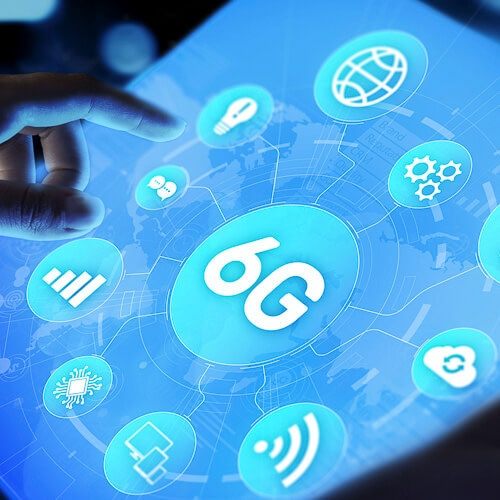
A small group of telecom executives and regulators from all over the world are meeting in Geneva this week to see if they can pull off a minor miracle. Their goal: to find a common understanding of 6G in the same way they helped develop the foundation of a global 5G standard almost a decade ago.
"Collaboration and cooperation will be highly important," according to a document shared ahead of the meeting by HyoungJin Choi, a researcher at Samsung.
That's clearly a tall order. For years, the US and China have been moving, seemingly inexorably, toward a clash over culture and trade. The situation has imperiled China's Huawei, which remains the world's biggest vendor of networking equipment by a wide margin, and is now forcing countries around the world to basically pick sides. More recently, Russia's invasion of Ukraine has energized even more sectors of the global economy, with some European countries looking elsewhere for their basic oil and gas needs.
The situation has given weight to the concept of the splinternet, wherein core tenets of a shared and interoperable Internet are no longer available around the world. Indeed, some major names in the US financial sector are already planning for a future that is trending away from globalization rather than toward it.
2030 and beyond
Nonetheless, global consensus is exactly what some members of the International Telecommunication Union (ITU) are seeking. Delegates of the the group's Working Party 5D (WP 5D) are meeting this week to discuss "future mobile communications targeting 2030 and beyond," an effort that traces its origins to 2018.
Figure 1:  (Source: Kirill Ivanov/Alamy Stock Photo)
(Source: Kirill Ivanov/Alamy Stock Photo)
The ITU's effort has precedent. The association was created by 20 European governments in Paris 157 years ago. Today, it's ranked as the oldest agency of the United Nations and recently celebrated World Telecommunication and Information Society Day.
Through two world wars, the creation of the Internet and the rise of the smartphone, the ITU has worked to ensure that communications networks in one country can actually communicate with those in another. "Every time you make a phone call via the mobile, access the Internet or send an email, you are benefitting from the work of ITU," according to the agency.
Another G
Now, the ITU is hoping to gather consensus around 6G. The agency's meeting this week collects 6G associations from all corners of the world: Hexa-X (mostly Europe); one6G Association (Europe and Asia); NextG Alliance (North America); IMT-2030 6G Promotion Group (China); TSDSI (India); Radio Research and Development Institute (Russia); and NTRA (Egypt) are among those presenting.
Not surprisingly, some common themes have already developed, based on the presentations the various groups have filed with the ITU in advance of the event. Artificial intelligence, green networks, communications in the terahertz spectrum bands, global coverage and "multidimensional sensing" have been flagged.
However, people familiar with the hype surrounding 5G in the early days of that technology aren't getting excited just yet. "If you replace the number 6 with the number 5, you would not be able to tell the difference – because it's nothing new in there," Recon Analytics analyst Roger Entner told Politico recently.
Still, the ITU often represents a starting place for mobile technologies considering that it works to ensure globally harmonized spectrum allocations. The ITU's last World Radio Conference in November 2019 helped ratify spectrum for 5G. The agency's next conference, scheduled for the end of 2023, promises to do the same for initial 6G spectrum bands.
The technology angle
It's worth noting that policy is just one aspect of 6G. On the technological side, companies all over the world are developing new techniques and innovations that could make it into a 6G standard.
Already European, American and Chinese companies are working furiously to patent technologies that could find their way into a 6G standard. Indeed, the analysts at IDTechEx estimated last year that several billion dollars had already been collectively invested into 6G communication technologies.
"Yes, there are 6G patents that have been issued and many more are pending in patent offices around the world," Ed Fish, co-founder and managing director of patent-monitoring firm Tech+IP Capital, wrote in response to questions from Light Reading. "But it is still a little too nascent from our point of view to make assessments until things mature a bit. Some of the early articles have spoken about Chinese companies having 35-40% of the 6G patents, but this is still very early days... kind of like spring training."
The next step will likely involve associations like ETSI and 3GPP, where patented technologies will be hammered out into global communications standards.
Related posts:
— Mike Dano, Editorial Director, 5G & Mobile Strategies, Light Reading | @mikeddano
Read more about:
AsiaAbout the Author(s)
You May Also Like




_International_Software_Products.jpeg?width=300&auto=webp&quality=80&disable=upscale)







